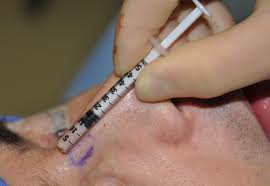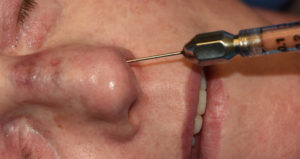The concept of injectable treatments has expanded to a wide variety of aesthetic facial uses over the past decade. From a single site enlargement like the lips to more extensive facial rejuvenation, injections offer an easy way to quickly add volume. Even the nose, once a basion of being changed exclusively by surgical manipulation, also can now have some changes without open surgery.
Known as an injectable or non-surgical rhinoplasty, using synthetic hyaluronic fillers (e.g., Restylane, Juvederm) to build up the dorsum or fix asymmetries caused by concavities in any part of the nose is now well known. But synthetic fillers are not the only possibility for nasal injection. Fat and cartilage injections are now entering the mix as injectable materials.

This presentation out of Turkey is an extension of a published paper in the July 2012 issue of Plastic and Reconstructive Surgery. In over 3800 rhinoplasties, the author discusses the value of reshaping the nasal tip using diced cartilage in a prepared pocket. Besides good aesthetic results, diced cartilage offered the advantage of no late show that is well known to occur with other type of cartilage graft preparations.

The use of diced cartilage and fat injections in rhinoplasty has a useful role which is yet to be precisely defined. Diced cartilage has had more extensive use and, for now, is more predictable when injected than fat. But the one big difference in autologous tissue injections than synthetic fillers in the nose is that they are still a surgical procedure, even if it is a relatively small one. Pockets must be created to receive the grafts. These are chunks of tissue being introduced rather than a smooth flowing material than can be placed through a tiny 30 gauge needle. In addition, there must be a harvest and the graft material does not come off-the-shelf. Thus they are not an office procedure and are not really a non-surgical rhinoplasty. Diced cartilage and fat is an adjunctive grafting method for surgical rhinoplasty.
Dr. Barry Eppley
Indianapolis, Indiana


